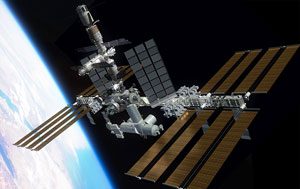Space: Space Stations: ISS

The International Space Station (ISS) is an internationally developed research facility that is being assembled in low Earth orbit. On-orbit construction of the station began in 1998 and is scheduled for completion by late 2011. The station is expected to remain in operation until at least 2015, and likely 2020. With a greater cross-sectional area than that of any previous space station, the ISS can be seen from Earth with the naked eye, and is by far the largest artificial satellite that has ever orbited Earth. The ISS serves as a research laboratory that has a microgravity environment in which crews conduct experiments in biology, chemistry, medicine, physiology and physics, as well as astronomical and meteorological observations. The station provides a unique environment for the testing of the spacecraft systems that will be required for missions to the Moon and Mars. The ISS is operated by Expedition crews of six astronauts and cosmonauts, with the station programme maintaining an uninterrupted human presence in space since the launch of Expedition 1 on 31 October 2000, a total of 10 years and 112 days.
